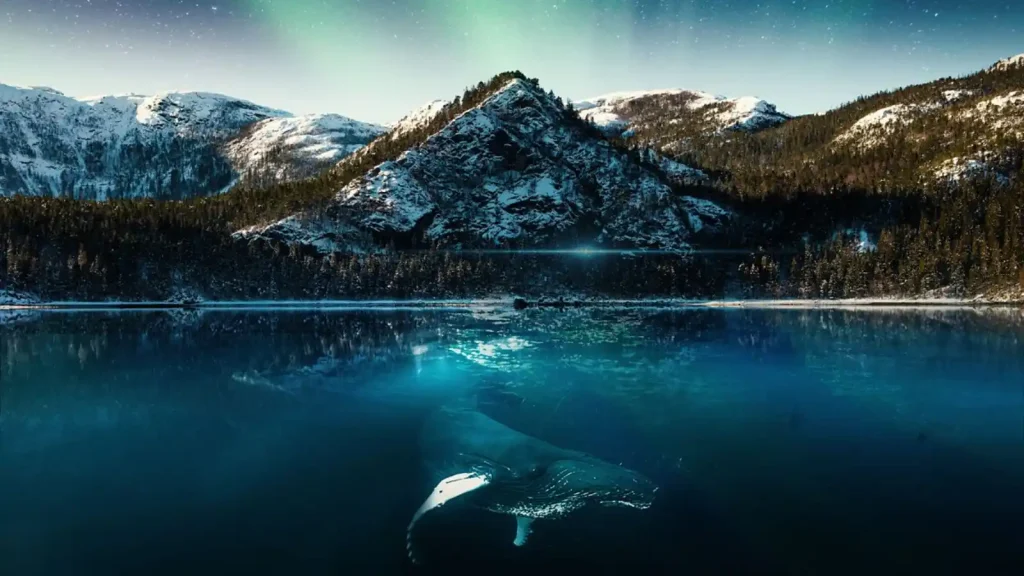Wild Scandinavian episode 3 – Ice and Fire – Scandinavia’s northernmost reaches, a realm where the forces of ice and fire have historically sculpted the landscape, are ultimately dominated by the sun’s pervasive influence. These frozen territories, home to an array of wildlife including musk oxen, polar bears, and Arctic foxes, face the rigorous challenge of surviving through the extended, dark polar night.
However, with the advent of spring, the sun reemerges, catalyzing a remarkable transformation across the landscape. This shift not only alters the physical environment but also signals the arrival of thousands of migratory species, enhancing the region’s biodiversity.
As the midnight sun ascends, it ushers in an era of relentless activity and vitality in the north. Life here becomes a frenetic dash, a period of sleepless excitement and ceaseless opportunity. This is especially true for the local fauna, which engage in a race against time to nurture and raise their offspring. Yet, this period of abundance and growth is not without its challenges.
For some species, the summer’s escalating heat poses a significant threat, introducing new perils that must be navigated before the onset of the first frost. This return to colder temperatures is, paradoxically, a welcome change, signaling the approach of winter—a time of rest and renewal in these remarkable Arctic kingdoms.
The Majestic Realm of Ice and Fire
The vast and rugged landscapes of Scandinavia are a testament to the dramatic forces of nature. From the icy realms to fiery volcanic fields, this region is a spectacle of nature’s extremes. The Wild Scandinavia series, particularly the “Ice and Fire” episode, offers an in-depth look at these contrasting forces that shape the life and geography of the region.
Polar Night and Midnight Sun: Life in Extreme Conditions
In Scandinavia’s far north, the long, dark polar night governs the winter months. During this time, species like musk oxen, polar bears, and Arctic foxes navigate a world of darkness, as depicted in the Ice and Fire episode of Wild Scandinavia. However, the arrival of spring brings a transformative midnight sun, igniting a race against time for these animals to raise their young in a brief, intense summer.
The strategies for survival during the long polar night are diverse and fascinating. The series explores how different species, from the mighty polar bear to the elusive Arctic fox, adapt to these extreme conditions.
Kingdoms of Ice: The Arctic Wildlife
Scandinavia’s northern extremes are home to a rich array of wildlife. The Photos from Wild Scandinavia capture the essence of these resilient creatures. Musk oxen, with their incredible showdowns for dominance, and polar bears, with their unique courtship rituals, showcase the adaptability and resilience of Arctic wildlife.
Svalbard’s Surging Glaciers
In the heart of the Arctic, Svalbard’s glaciers are a sight to behold. These surging ice masses are a critical part of the ecosystem, shaping the geography and providing habitat for various species. The series offers stunning visuals of these dynamic landscapes.
The Transformative Power of the Sun
The return of the sun in spring brings about a dramatic transformation in the Arctic. This midnight sun transformation is a period of intense activity, as animals and plants race to make the most of the short summer.
The Dangers of Summer
While summer brings life and vibrancy to the Arctic, it also poses its own set of challenges. The increasing heat can be a threat to many species, who must find ways to cope with the changing environment before the onset of winter.
Q: How do animals survive the extreme conditions of the polar night?
A: Animals have adapted in various ways, such as conserving energy, developing thick fur, and relying on stored food reserves to survive the harsh conditions of the polar night.
Q: What changes occur in the Arctic landscape during summer?
A: The Arctic landscape undergoes a dramatic transformation with the melting of ice and snow, blooming of flora, and arrival of migratory species, creating a vibrant ecosystem.
Q: Are the surging glaciers in Svalbard a threat to wildlife?
A: While they can pose challenges, the glaciers are also crucial to the ecosystem, providing habitats and influencing the region’s climate and geography.




